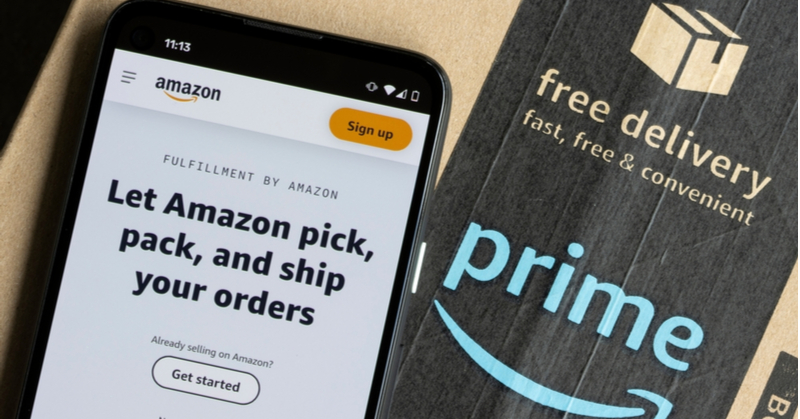When e-commerce first began, many consumers were hesitant. Then e-commerce grew until the scale tipped and many consumers expected to complete online purchases. Today, e-commerce marketplaces have become an almost necessary extension of most e-tailer operations.
At the beginning of e-commerce, merchants would take orders from their websites and then ship the items from their locations. The most well-known e-tailer, Amazon, started out exactly in this way.
However, as Amazon grew and built out its infrastructure, it realized that it could offer order fulfillment services to others and take a cut of the sale. This service is called Fulfillment by Amazon, or FBA. In fact, FBA is a huge part of Amazon’s business now and represents one of the largest marketplaces in the U.S. Here are a couple of FBA statistics from Amazon’s 2021 Small Business Empowerment Report:
- Sellers see on average a 20-25% sales increase after adopting FBA
- Seller partners in the U.S. sold 7,400 products every minute from Sept. 1, 2020 until Aug. 30, 2021.
- In 2021, Amazon increased FBA capacity by increasing worldwide distribution center square footage by 50% and hiring 450,000 new workers
When you think about what it would take to order a product, bring it into a warehouse with all of the expenses that having a physical location entails, and then have the manpower to fulfill orders and get them shipped out, you can understand why FBA. In fact, with just one of these factors – shipping cost, Amazon suggests that FBA results in a 30% savings in cost compared to other shipping carriers.
Amazon has massive scale, both in their warehousing capabilities and now with their own shipping capabilities. So, for a lot of sellers, it just makes economic sense to unload the fulfillment headaches onto someone else. While Amazon was the first to do the fulfillment piece, Walmart got into the game as well and so have many others.
According to Webretailer, North American marketplaces see 4.4 billion visits per month. The top five online marketplaces in the U.S. by visits per month are Amazon, eBay, Walmart, Etsy and Target.
With 47% of e-commerce sales made through marketplaces in the U.S. in 2020 (nearly two trillion dollars), e-commerce sellers need to understand the advantages and disadvantages of selling on an online marketplace.
The advantages of selling on a marketplace
The advantages of selling on a marketplace are many, from the logistics mentioned above to the fact that marketplaces attract millions if not billions of eyeballs. It is commonplace for a consumer to go to Amazon or Walmart Marketplace to search for an item, order it from the marketplace and receive it within a few days. This trend became even more pronounced during Covid with people not wanting to go to physical stores.
Along with these advantages is the ability to source and offer materials that the seller doesn’t even need to touch. I remember attending a conference where there were hundreds of vendors ready to source products directly to Amazon. I am sure we have seen the ads on social media of people who build six-figure incomes by selling on one or more marketplaces.
The disadvantages of selling on a marketplace
What are some of the disadvantages? First, you simply are not building brand equity. Unless you have a huge marketing budget and can build a brand outside of the marketplace platform, you are simply one of many others selling the same widget. And you often are also competing with other sellers of the exact same product on price.
Additionally, you have no control over the process. While Amazon and other marketplace providers are very good at what they do, mistakes do happen and the blame is all yours.
Lastly, there are a lot of fees involved. Amazon is a good example.
Amazon will charge fees between 6-20% of the item's selling price depending on the category of item sold. This fee is Amazon’s commission for bringing the sale for you.
In addition to this fee, you need to add inventory storage fees. These fees vary with the length of time that Amazon stores your product. Fees increase the longer Amazon stores product, so sellers need to pay attention to their inventory.
Next, you have to consider Amazon charges fulfillment fees. These fees are based on the size and weight of the items being sold and shipped. And you also need to consider return fees if and when items are returned, especially if it eligible for a free return via Amazon Prime.
There are many other fees, but I think you get the point. The FBA seller needs to stay on top of their Amazon account (called Seller Central) to ensure the FBA costs don’t take all of their profit.
So, while we have spent a lot of time on Amazon because they are the biggest, there are other marketplaces, and all offer advantages and disadvantages. A good example to mention here is one that doesn’t offer the same fulfillment services but should be mentioned - the Facebook marketplace.
And a final shout out to eBay – the granddaddy of all marketplaces.
.png?width=150&height=63&name=TWRlogo-regmark_blueblack%20(1).png)
.png)










Do you have questions about this article? Email us and let us know > info@woodard.com
Comments: